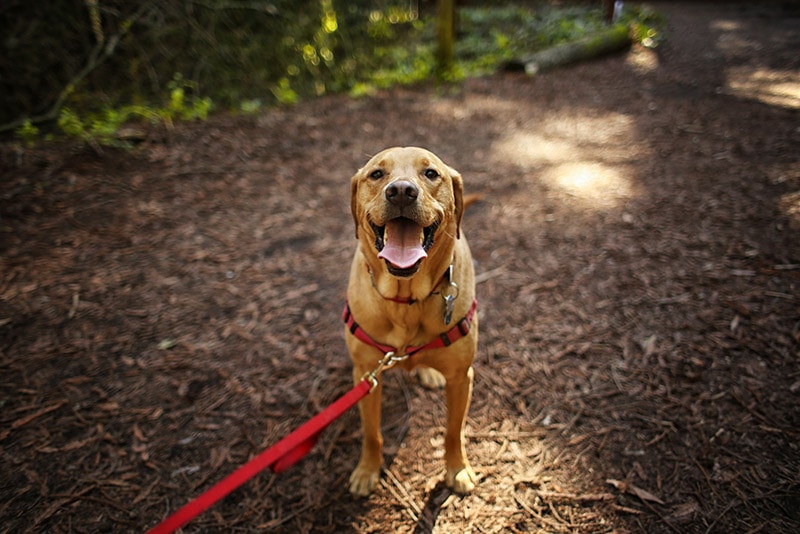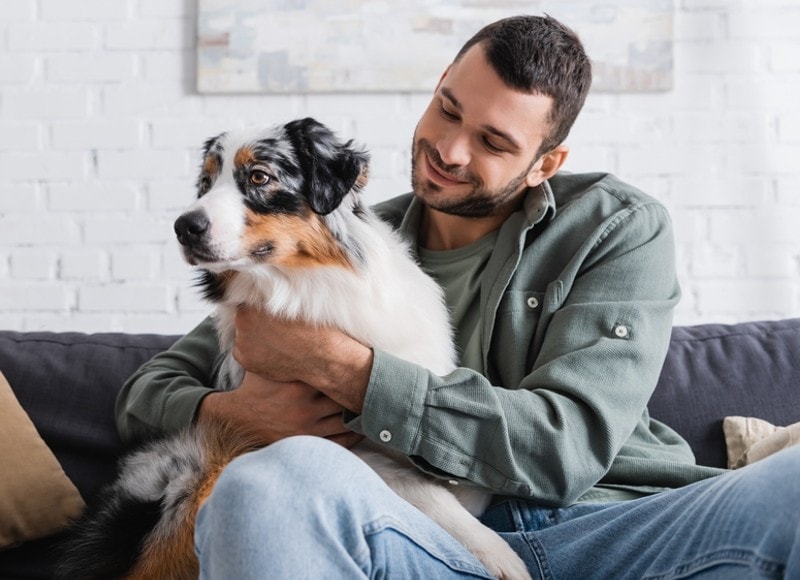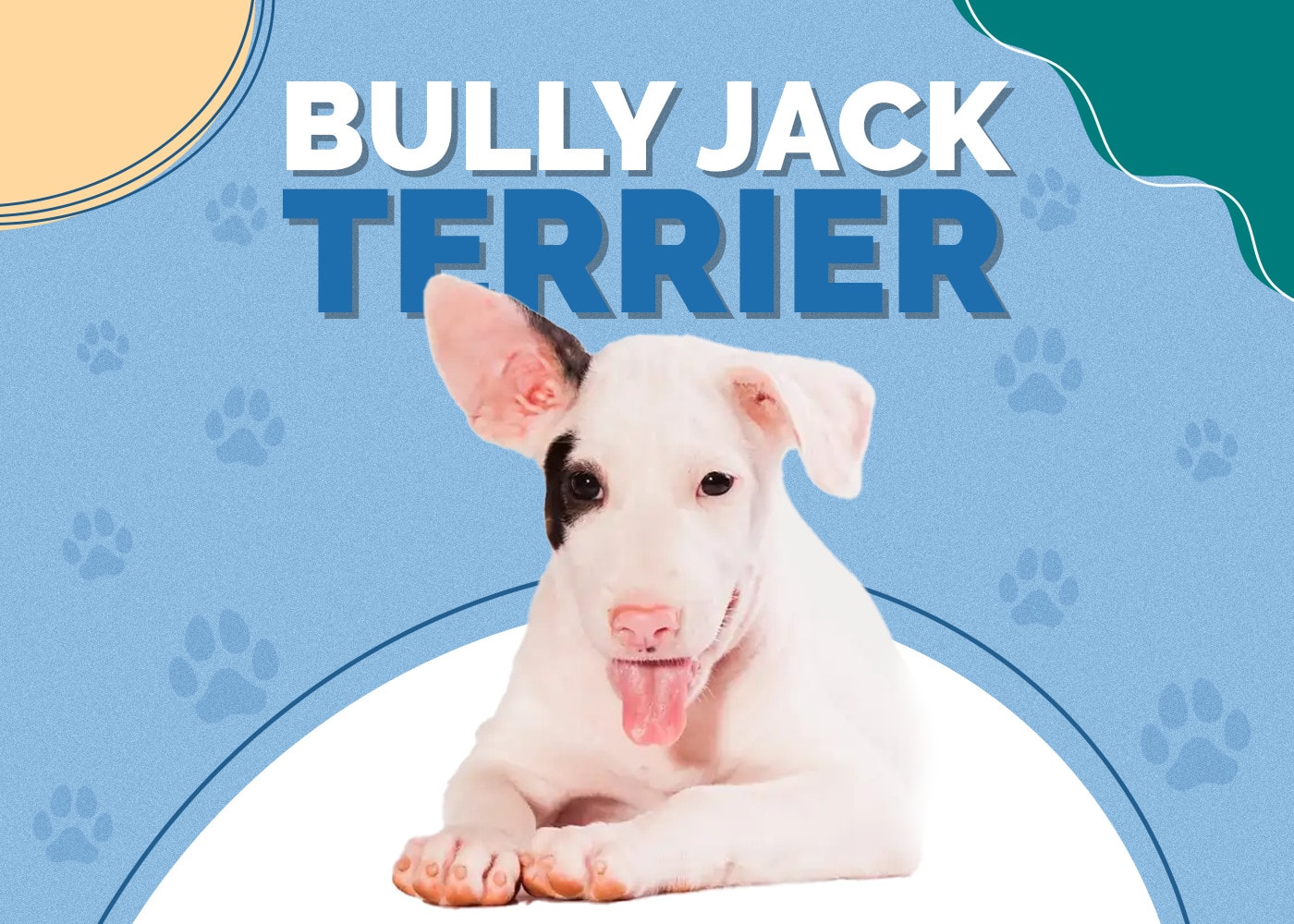Why Does My Dog Eat Tissues? Vet Approved Reasons & 5 Ways to Stop It
Updated on
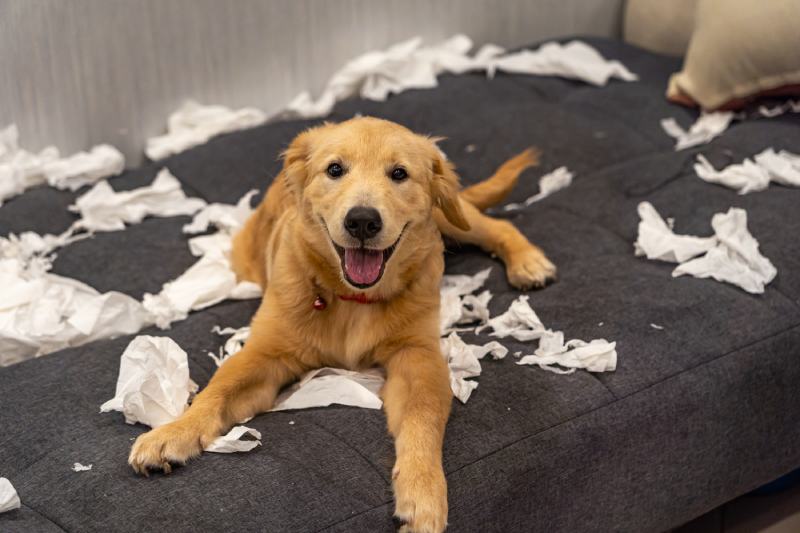
Dogs get up to some strange, zany antics around the house, ranging from harmless to problem behavior. For instance, it’s exasperating to find out your dog is eating tissues or toilet paper. Not only does it leave a big mess everywhere when they shred and eat it, but it can become a health concern if they eat enough of it. To help curb this troubling behavior, follow along with our guide on why your dog likes to eat tissue in the first place and what you should do about it.
Why Dogs Eat Tissues
Before we start, it helps to understand exactly why your dog is eating tissue, but it can be hard or nearly impossible to tell for sure at a glance. The important thing to know is that eating paper can be dangerous and cause blockages in your dog’s stomach and intestines, especially if they eat intact paper or tissue whole. For reference, let’s check a quick list of reasons why dogs eat tissue and paper.
- They’re Hungry: Even being a little peckish can make paper towels or tissue with food on it seem very enticing to your dog.
- Pica: A catch-all term referring to a compulsion to eat non-food objects that can be the result of one or more causes below.
- It’s Fun: The tactile experience of holding down paper or other objects and shredding them or eating them stimulates your dog’s feel-good chemicals and harkens back to their evolutionary hunting instincts.
- They’re Anxious: The repetitive act of shredding and eating stuff soothes anxiety for stressed or scared pups, just like how many people use stimming like biting fingernails as a self-soothing activity.
- They’re Bored: Dogs that don’t get enough exercise or mental stimulation may look for objects like tissues and paper.
- Diabetes: Diabetic dogs may suffer from pica and end up eating inedible items, including tissues.
- They’re a Teething Puppy: Teething is uncomfortable, and puppies often seek out anything they can chew on—it just so happens that the tissue is soft and perfectly chewable.
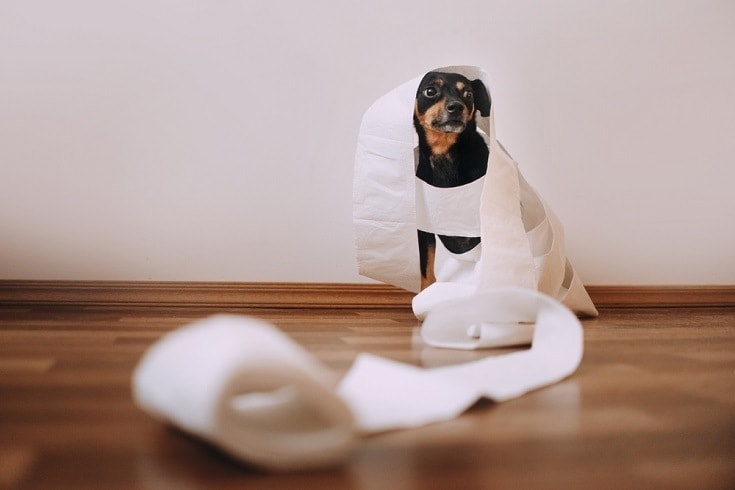
The 5 Ways to Stop Your Dog From Eating Tissues
There can be several culprits at play when your dog eats tissue, whether it’s straight off the roll or paper you’ve thrown in the trash. To help you be sure you’ve addressed the right cause to blame, let’s walk through what you should do to stop this problem behavior. Of course, if your dog is eating tissues or other inedible items excessively, or is feeling unwell in any way, has signs of vomiting, diarrhea, straining, constipation, lethargy, or abdominal pain, skip these steps and call your vet immediately. The last four ways are useful in case of behavioral reasons, such as boredom and anxiety, that are leading to your dog shredding or eating tissues.
1. Visit Your Vet
If your dog is suddenly starting to eat tissues and hasn’t been doing this before, is feeling unwell in any way, or this behavior is getting worse, your dog’s pica habit toward paper products could be a sign of a dietary deficiency or an underlying illness, such as gastrointestinal parasites, anemia, diabetes, inflammatory bowel disease, or discomfort. If your dog continues to crave paper, take them to the vet with your concerns. Your vet will be able to run bloodwork to identify any related deficiencies, organ disease, or sources of pain and advise you on what to do next.
It’s also important to visit your vet if your dog eats a large amount of paper products, particularly if it’s whole paper they didn’t shred beforehand. While light tissues aren’t typically a problem for dogs to digest, large amounts or thicker paper can become a serious, even life-threatening digestive blockage.
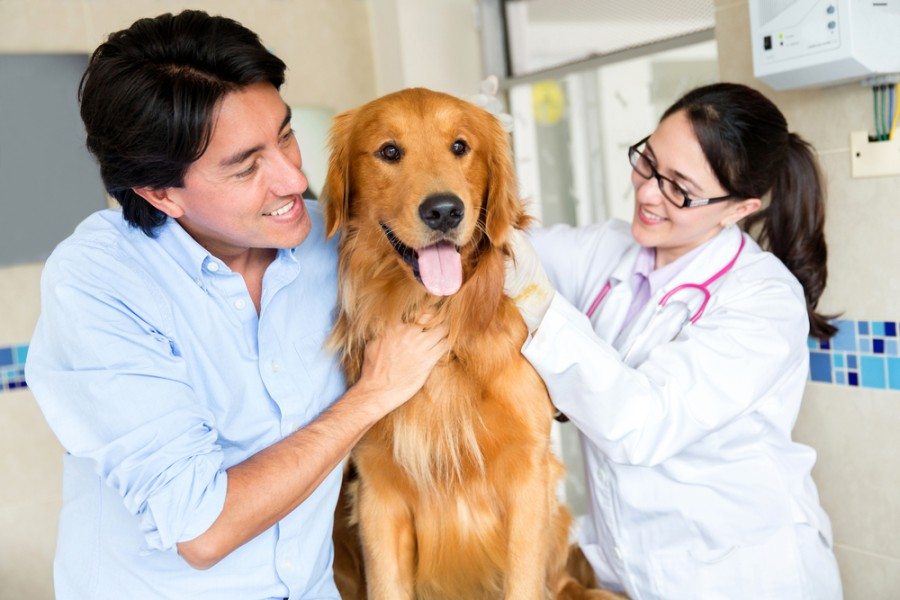
2. Remove the Tissues
The most obvious way to stop your dog from eating tissue is to simply remove the tissue so they can’t get to it anymore. Throw used tissue into a trash can with a secure lid to prevent your dog from eating it and put boxes of new tissues in high or remote areas that your pup can’t reach. You’d be shocked how far some big dogs can reach onto counters or tables!
Anything paper is fair game here. Put away your baby wipes, toilet paper, tissues, important papers, paper towels, and anything else resembling paper. This step alone won’t do anything to stop your dog from just looking for something else to play with or eat, but it’s an essential first step before moving on to your next steps. Also consider crating your dog, after gradually training them in a positive way that a crate is their safe place and not a punishment. This may take time, but it will ensure your dog cannot reach any inedible or unsafe non-food or even items.
3. Give Your Dog More Attention
Depending on your dog’s breed, they may not be getting enough exercise if they’re resorting to eating tissue. It acts as a fun way to get out their frustrations and interact with their environment, in a way similar to toddlers putting everything in their mouths.
Just like toddlers, you can help dissuade problem behavior like this by giving them more dedicated one-on-one time with your dog. While walks and exercise are great, you shouldn’t neglect your dog’s need for mental stimulation either.
Obedience training and games like tug of war are fantastic for helping to tucker out your dog’s brain, but they’re not the only ways. Try giving them puzzle toys like stuffed Kongs or snuffle mats to occupy them during downtime or when you can’t personally be there to entertain them.
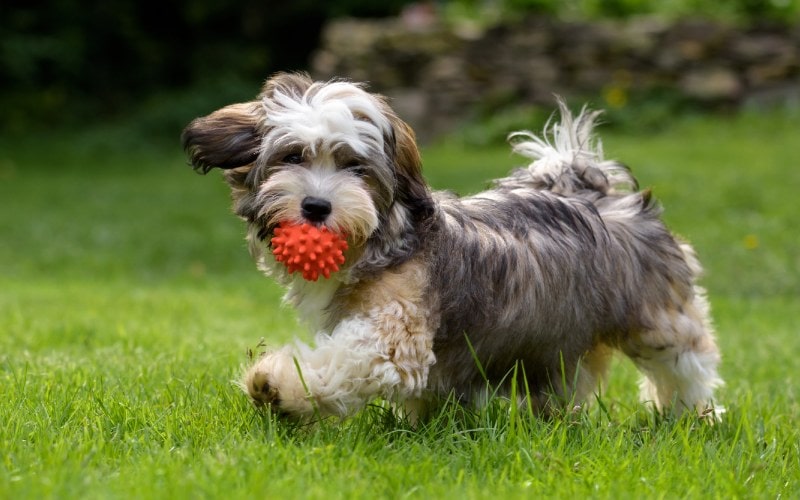
4. Give Your Dog More safe Toys
If your dog doesn’t have enough safe, fun toys to play with, they’ll get bored and look around for stuff to play with. Nip this behavior in the bud right away by buying your dog more toys they can play with both while alone and with you. Play is extremely important for dogs to express themselves as well as soothe anxiety, fear, or plain old day-to-day stress. You probably have your own preferred stress relief methods, and eating tissue or other paper can become that for some pups. However, make sure those toys are indestructible and cannot be swallowed by your pooch, especially if they are chewing them unsupervised.
5. Use Redirection and Positive Reinforcement
Without steady redirection and positive reinforcement, all your previous efforts may be for nothing. Your dog’s habit of eating tissue or paper won’t go away overnight, even if you shower them with toys and attention. You need to keep an eye on them to make sure they don’t get into any tissue-related mischief. If they do, immediately take the item away and redirect them to a safe, more acceptable dog toy.
Positive reinforcement with new toys is very important to smoothly make the transition from a paper-tissue fiend to a safe, healthy dog playing with their toys. Every time you redirect your dog away from tissue or paper to a toy, or they choose to drop the tissue and ignore it, give them a treat and praise them. Your dog will make the connection that toys are good and get them treats, and will slowly lose interest in paper or tissue. You can slowly reduce your treats over time once they learn. You may need help from a canine behaviorist if your dog is suffering from anxiety or your attempts at positive reinforcements are not working.
Final Thoughts
Your dog’s tissue-eating could just be them being a dog, but it could be a sign of illness, anxiety, or the elusive condition called pica. The silver lining to this situation is that you can help phase out this behavior and discourage healthy play by removing tissue from your dog’s reach, giving them more attention, and redirecting them to other, safer toys. But first, you need to get your pup checked out by the vet to make sure there isn’t an underlying reason for this behavior.
- Related Read: My Dog Ate a Pencil! Our Vet Explains What to Do
Featured Image Credit: Muk Photo, Shutterstock



